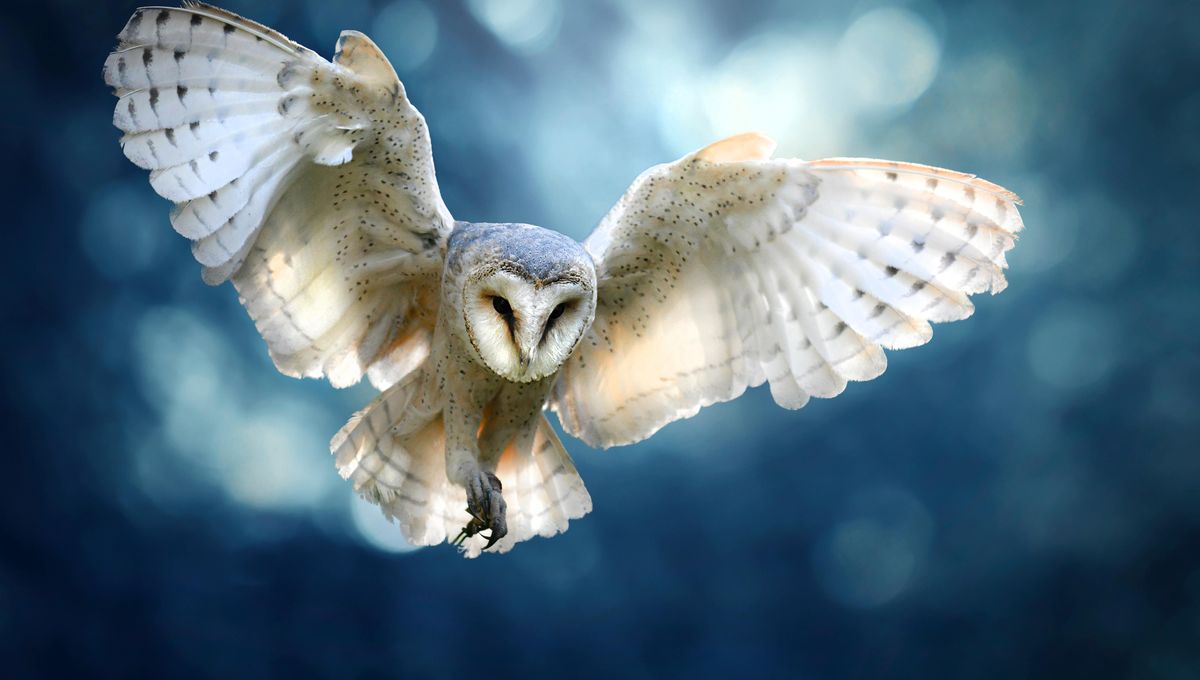
What would you do if you encountered a shimmering white ghost on a moonlit night? Would you instantly run, or would the shock of such a scene freeze you to the spot as you struggled to make sense of such a thing? Well, if your answer is the second response then you have something in common with the prey of the white barn owl.
The white barn owl (Tyto alba) is a winged phantom. It is known for its distinct heart-shaped face, as well as its ghostly white plumage and eerie shriek. The predator is common across many parts of the world and is a veritable terror for small mammals such a mice, voles, and other rodents. They will also eat other birds, amphibians and even bats, if they get a chance.
These birds of prey use their exceptional hearing to track their food as they skim across fields. They do this through that characteristic heart-shaped face that directs high-frequency sounds to their ears, like a natural satellite dish. Their ears are set to different heights in their skulls, which lets them locate their food with precision. Then, once they know where it is, they hover in the air above their victim and then drop from the sky to grasp it in their talons before eating it whole.
But while it is easy for us to describe this hunting practice, it is not always easy for the owl to carry it out in reality. Success, it seems, relies on a number of factors, but recent research has shown that the Moon may play a significant role as well.
Studies have found that white barn owls have more success when hunting under a full Moon than reddish-brown barn owls. This may seem counterintuitive, since we would expect white plumage to be more visible under such conditions, as it reflects moonlight better than darker feathers. This would mean that prey could see the birds a lot sooner and therefore scurry away to safety. But the research suggests otherwise.
According to biologists at the University of Lausanne, Switzerland, the fact that white barn owls are more visible may actually be their secret weapon. When prey see the spectral owl approaching them, they seem to freeze for longer periods of time, which may be due to a natural aversion rodents have to bright light. Effectively, the small critters are dazzled by the sudden appearance of a glowing predator. This gives the white owl more time to grab their dinner than owls with darker feathers.
In fact, the researchers posit that this advantage may explain why barn owls are white in the first place: “barn owls might have evolved white plumages to be seen.”
These conclusions are drawn from data collected over more than 20 years. The team have used various methods to gather their evidence. This has included positioning infrared-sensitive video cameras by the entrances to owl nest boxes so they can count the number of times owl parents, especially the fathers, return with food each night. They compared this data with information on Moon cycles to see which owls were more successful when there was a new or full Moon. As you would expect, reddish-brown owls fared better in new Moons when there was less light to reveal them.
Through another study, the researchers attached small non-invasive GPS systems to the backs of different owls to observe their hunting behavior. This also showed that brown barn owls had less success when hunting in moonlight. Interestingly, white owls actually preferred to hunt while facing the Moon so that the light was directly shining on them.
The team then replicated these conditions in a laboratory, where they tested the reactions of voles facing an approaching owl. The researchers presented either a white or brown stuffed owl to the rodents while it was bathed in light that simulated either a new or full Moon night. When approached by the different owls, the voles froze but their time of inaction varied depending on the light and the plumage. The voles froze for the longest when a white owl was approaching them with light that matched that given off by the full Moon.
So it seems that being able to glow on a moonlit night is an effective way to scare prey into submission. Perhaps this is something to bear in mind if you ever find yourself wandering alone when the Moon is fat.
[H/T: Psychology Today]
Source Link: Barn Owls And Ghosts Have Something Important In Common